032018_YKMV_A12.pdf





March 20, 2018 • Page 12
shop online at www.missourivalleyshopper.com
National Ag Week
March 18-24, 2018
SDSU Extension Research Looks at Growing
Early Maturing Soybeans
SDSU iGrow
BROOKINGS, S.D. - One management
strategy soybean growers can implement
to reduce risk associated with Mother
Nature is to grow soybeans with varying
maturity ratings.
"With this approach, producers are not
'putting all their eggs in the same basket'
so to speak," said David Karki, SDSU Extension Agronomy Field Specialist.
He further explained that planting
soybeans other than recommended maturity group for the region, especially early
maturing varieties, allows producers to
start harvest earlier in the fall and continue field activities such as establishing
cover crops and/or timely winter wheat
planting.
"Throughout recent growing seasons,
growers have commented that early
soybeans have performed equally well in
terms of yield, if not better, than soybeans
with recommended maturity ratings,"
Karki said.
What SDSU Extension Research Has to
Say
In collaboration with interested growers and the South Dakota Agricultural
Experiment Station at SDSU, SDSU Extension established a small plot trial during
the 2017 growing season at two locations
in Northeast South Dakota.
The first location was at the SDSU
Northeast Research Station near South
Shore. The second was in a Clark County
soybean grower's field near the town of
Henry.
The trial used two early varieties
(rated 0.2 and 0.3) and two recommended
varieties (rated 0.9 and 1.0) provided by
Mycogen Seeds.
All varieties were planted at two different dates:
1. May 5, 2017 which was early
2. May 23, 2017 which is when soybeans are typically planted in the area.
The test plots were 10-feet-by-40-feet
plots with four replications for each planting date.
Due to consistent rainfall in the second
half of September harvesting was delayed
more than normal and was only completed October 3, 2017.
The results featured in Table 1 show
that yields, even though numerically quite
different, were not statistically significant
at the Henry location, especially for the
early planting date.
"This could be due to weed pressure
and population loss as a result of heavy
rainfall in late June," said Anthony Bly,
SDSU Extension Soils Field Specialist.
He explained that this site received
9-inches of rain in three days the last
week of June, which flooded almost half of
the early planted plots.
Some early flooded plot yields were
not as consistent at harvest compared to
the non-flooded plots.
Therefore, the yields from flooded
plots were not used while running statistics which may have contributed to large
Least Significant Difference (Table 1). This
resulted in difficulty to statistically distinguish mean yields for the maturity ratings
used in the study.
At the Northeast Research Station,
yields from the earliest maturing soybean
variety (i.e. 0.2) were significantly different from the other three soybean varieties
for both plating dates.
"These results suggest that planting
soybean varieties that are earlier than
half the maturity point than recommended for the region did not result in equal
or higher yields in 2017 growing season,"
Karki said.
This research group plans to continue
this study in the 2018 growing season.
The study was funded by South Dakota
Soybean Research and Promotion Council.
Road Salt & Water Quality: Growing Concern in Some Northern States
SDSU iGrow
BROOKINGS, S.D. - While road salt
throughout the winter months is seen
by most as a necessity in our part of the
country, it can come at a cost, said David
Kringen, SDSU Extension Water Resources
Field Specialist.
"While the salination of South Dakota
surface waters is not a water quality concern at this time, awareness of the issue
could prevent it from being a concern in
the future," Kringen said.
He explained that salt corrosion can
not only cause damage to our infrastructure (roads and bridges) and vehicles, it
can be harmful to our freshwater ecosystems as well.
Salination (or salinization), is the
process where water-soluble salts accumulate in soils, or a body of water. It is
typically measured by an increase in chloride, which is an anion of many salts (i.e.
sodium chloride, magnesium chloride).
In soils, salination is a concern,
Kringen explained, because excess salts
hinder the growth of crops by limiting
their ability to take up water.
"In freshwater ecosystems, increased
salinity can significantly reduce both
species richness (the number of species
found in an ecosystem) and relative abundance (the abundance of a given species
relative to the abundances of the other
species) of aquatic plants and invertebrates; which in turn, affects the entire
food chain," he said.
Measuring Salinity
Salinity ranges, measured as a concentration (milligrams per liter), are categorized as fresh to highly saline and can be
seen in the table.
The U.S. Environmental Protection
Agency's nationally-recommended criteria
for chronic (long-term) chloride toxicity
exposure for freshwater aquatic life is 230
milligrams per liter.
In South Dakota, surface waters
recognize
designated as coldwater permanent fish
the link between the salination of water
life propagation waters are assigned a nubodies with the application of road salts
meric standard of 100 milligrams per liter
as metropolitan areas continue to develop
for a 30-day average and 175 milligrams
and grow.
per liter for a daily maximum.
"Keep in mind, runoff that enters city
"Concentrations above these limits
storm sewer systems to be channeled
means the water body does not support
away is discharged untreated and delivthe beneficial use assigned to it," Kringen
ered directly to rivers and streams; rivers
said.
and streams that we use for domestic,
For surface waters designated as a
commercial and recreational purposes,"
domestic water supply, the 30-day averhe said.
age and daily maximum concentrations
are 250 milligrams per liter and 438 milligrams per liter respectively.
March 18th - 24th
What research shows
A recent study conducted in 2017 investigated long-term chloride
trends in 371 freshwater
For all your Ag & Industrial
lakes in North America.
"Results indicated that the
Supplies
density of roads and other
All types of Welding, Machine Work,
impervious land cover was
Custom Fabrication. Also Fabrication &
a strong predictor of longInstallation of Grain & Silage Bodies.
term salination in Northeast and upper Midwest
“In Business Since 1932”
lakes where the study was
focused," Kringen said.
106 Industrial Ave., Hartington, NE • 402-254-6788
Other studies also
Wiechelman RepaiR
Courtesy of iGrow. This table shows how salinity ranges, measured as a concentration (milligrams per liter), are categorized as fresh to highly saline.
THE MOST TRUSTED NAME IN TARPS
The best-designed, best-engineered,
best-built tarping systems and
electric accessories on the market!
Be sure. Buy Shur-Co®.
2309 Shur-Lok St. 605.665.6000 SHURCO.COM








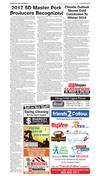





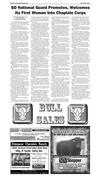

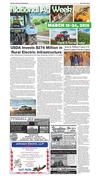
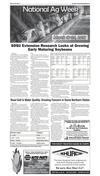
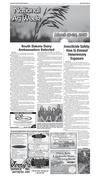
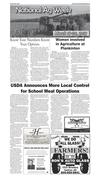



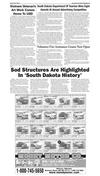

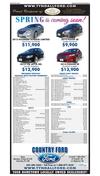
 Previous Page
Previous Page





